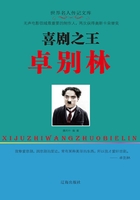On January 22, 1920, the Central Committee of the Communist Party, after prolonged discussion of Trotsky's rough memorandum, finally adopted and published a new edition of the "theses," expanded, altered, almost unrecognizable, a reasoned body of theory entirely different from the bundle of arrows loosed at a venture by Trotsky.They definitely accepted the principle of industrial conscription, pointing out the immediate reasons for it in the fact that Russia cannot look for much help from without and must somehow or other help herself.
Long before the All-Russian Congress of the Communist Party approved the theses of the Committee, one form of industrial conscription was already being tested at work.Very early in January, when the discussion on the subject was at its height, the Soviet of the Third Army addressed itself to the Council of Defense of the Republic with an invitation to make use of this army (which at least for the moment had finished its military task) and to experiment with it as a labor army.The Council of Defense agreed.Representatives of the Commissariats of Supply, Agriculture, Ways and Communications, Labor and the Supreme Council of Public Economy were sent to assist the Army Soviet.The army was proudly re-named "The First Revolutionary Army of Labor," and began to issue communiques from the Labor front," precisely like the communiques of an army in the field.I translate as a curiosity the first communique issued by a Labor Army's Soviet:
"Wood prepared in the districts of Ishim, Karatulskaya, Omutinskaya, Zavodoutovskaya,Yalutorovska,Iushaly,Kamuishlovo,Turinsk, Altynai, Oshtchenkovo, Shadrinsk, 10,180 cubic sazhins.Working days, 52,651.Taken to the railway stations, 5,334 cubic sazhins.Working days on transport, 22,840.One hundred carpenters detailed for the Kizelovsk mines.One hundred carpenters detailed for the bridge at Ufa.One engineer specialist detailed to the Government Council of Public Economy for repairing the mills of Chelyabinsk Government.One instructor accountant detailed for auditing the accounts of the economic organizations of Kamuishlov.Repair of locomotives procceding in theworks at Ekaterinburg.January 20, 1920, midnight."The Labor Army's Soviet received a report on the state of the district covered by the army with regard to supply and needed work.By the end of January it had already carried out a labor census of the army, and found that it included over 50,000 laborers, of whom a considerable number were skilled.It decided on a general plan of work in reestablishing industry in the Urals, which suffered severely during the Kolchak regime and the ebb and flow of the civil war, and was considering a suggestion of one of its members that if the scheme worked well the army should be increased to 300,000 men by way of mobilization.
On January 23rd the Council of Defense of the Republic, encouraged to proceed further, decided to make use of the Reserve Army for the improvement of railway transport on the Moscow-Kazan railway, one of the chief arteries between eastern food districts and Moscow.The main object is to be the reestablishment of through traffic between Moscow and Ekaterinburg and the repair of the Kazan-Ekaterinburg line, which particularly suffered during the war.An attempt was to be made to rebuild the bridge over the Kama River before the ice melts.The Commander of the Reserve Army was appointed Commissar of the eastern part of the Moscow-Kazan railway, retaining his position as Commander of the Army.With a view of coordination between the Army Soviet and the railway authorities, a member of the Soviet was also appointed Commissar of the railway.On January 25th it was announced that a similar experiment was being made in the Ukraine.A month before the ice broke the first trainactually crossed the Kama River by the rebuilt bridge.














